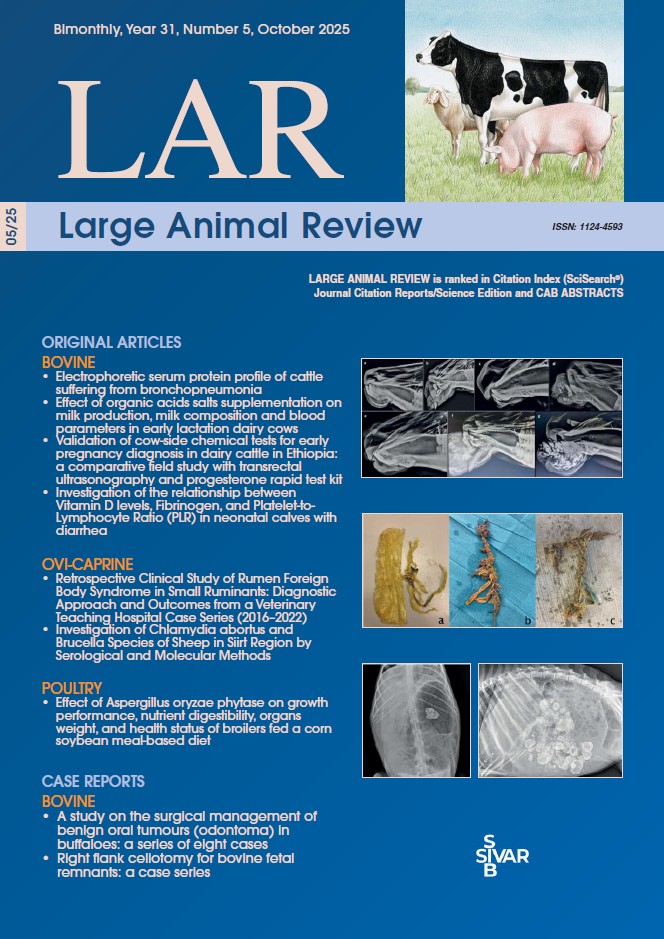Validation of cow-side chemical tests for early pregnancy diagnosis in dairy cattle in Ethiopia: a comparative field study with transrectal ultrasonography and progesterone rapid test kit
Abstract
Early pregnancy diagnosis in dairy cows is crucial for timely identification of non-pregnant animals, enabling prompt re-breeding or culling to improve reproductive efficiency. Lack of early pregnancy detection tool has been the biggest hurdle in reproductive management of dairy cows. Conventional diagnostic methods such as ultrasonography and hormone assays are often inaccessible at field level and unaffordable to smallholder farmers in low-resource settings. This study aimed to evaluate inexpensive, non-invasive, easy-to-use cow-side chemical tests for early pregnancy detection and compare their accuracy against transrectal ultrasonography (gold standard) and a commercial progesterone rapid test kit. A total of 191 Holstein-Friesian cows were tested using three chemical methods—copper sulfate tests in milk (3%, 5%, 7% CuSO₄ solutions), a barium chloride urine test (1% BaCl₂ plus urine protein dipstick), and a sodium hypochlorite urine test (10% NaClO) alongside a commercial progesterone rapid test kit (P4 Gold), and trans-rectal ultrasonography as gold standard. The overall pregnancy rate was 74.9% (143/191) using ultrasonography. The 3% CuSO₄ and 1% BaCl₂ tests demonstrated excellent diagnostic performance, each achieving 79.2% and 72.3% pregnancy, respectively; followed by NaClO urine test detected 70.2%. The specificity and sensitivity were 80.0% and 100.0% for 3% CuSO₄ test, and 85.4% and 92.3% for 1% BaCl₂ tests, respectively. Test agreement with ultrasonography were 85.9% and 90.6%, for 3% CuSO₄ and 1% BaCl₂, respectively. There was a significant difference in test results with 3% CuSO₄ performing better than all tests followed by 1% BaCl₂ (Chi Sq.=52.8, P<0.001; Chi Sq.=50.5, P<0.001, respectively) though overall test agreement with ultrasonography was better with 1% BaCl₂. The specificity and sensitivity for NaClO were 75.0% and 96.9%, respectively. The rapid P₄ kit identified 91.4% of pregnancies closely matching ultrasound results. This is the first study to directly validate these simple chemical tests in cattle against ultrasonography. The findings demonstrate the practicality, affordability, non-invasive and effectiveness of milk- and urine-based chemical tests for early pregnancy detection in cows, particularly in resource-limited and smallholder environments. These cow-side tests have the potential to substantially reduce open days and improve herd reproductive performance by enabling earlier intervention.


